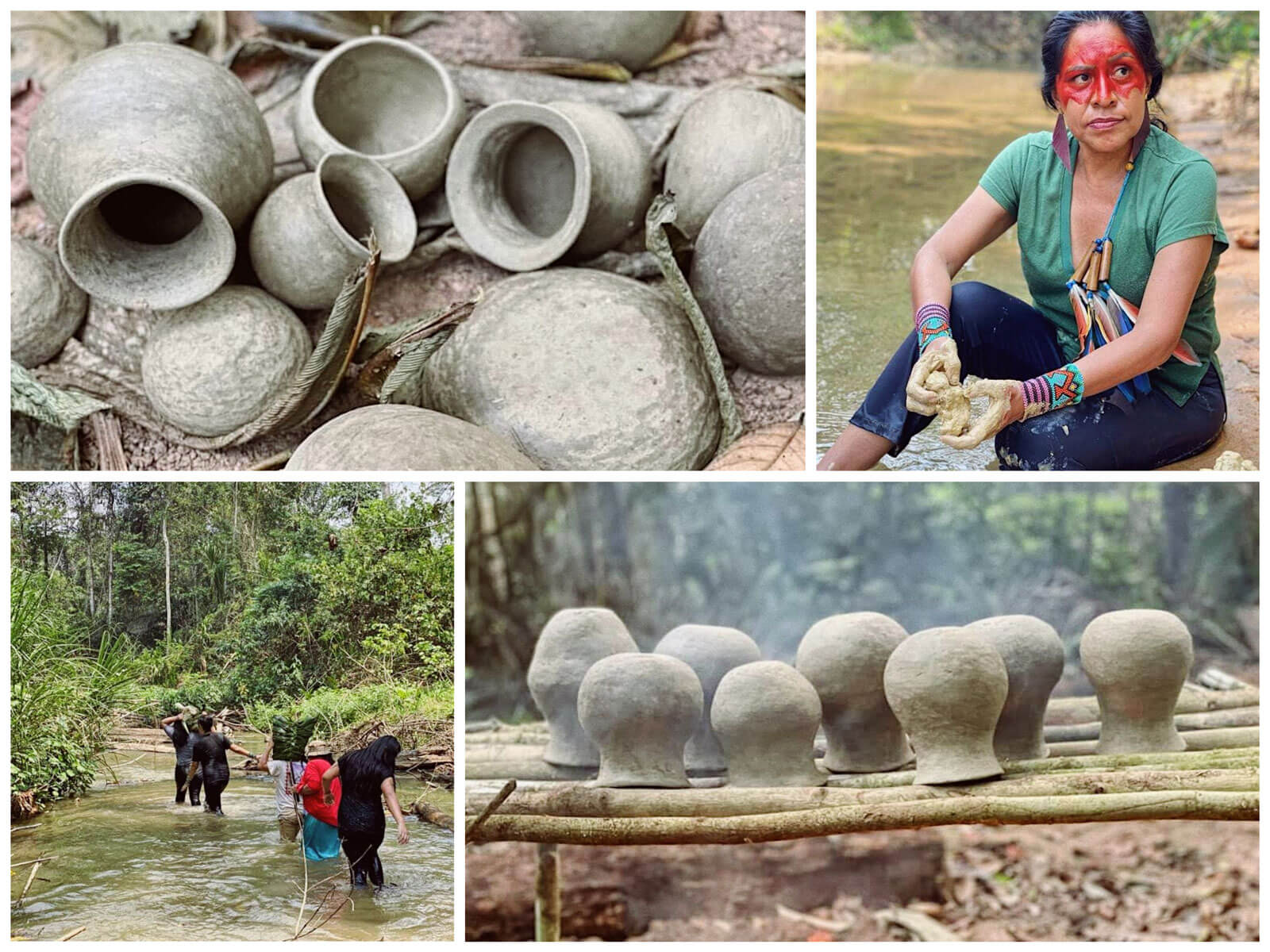Ceramics is a feminine spirit
Ceramic pots creation in the Yawanawá community
By Luna Rosa Soriano Yawanawá
WILD’s Yawanawá Cultural Liaison Intern, Luna Rosa Soriano Yawanawá, took us behind the scenes of the ceramic pots creation process in her community. Luna has been taught this age-old skill from her grandmother – learning to retrieve clay from the river and make pots that will naturally help cool the water when the land gets hot and make soup.
Ceramics is a feminine spirit, it is used to create various items for a variety of purposes, such as storing food, water, or for ritual purposes.
The majority of artists in this field are women. This is an art known exclusively for women, however, that does not mean men cannot play with pottery, they certainly can.
Historically for the Yawanawá, women who were excellent at ceramics became more desirable and attractive to men. So much so that Yawanawá leaders in the past chose their wifes based on their artistic abilities.
A long time ago, there was a mother and her son who lived in the forest. The mother was a potter who made large clay pots, which meant she stacked the clay one on top of another. Her son was a young single hunter. Her son came back from hunting very tired and saw the mound of clay under the shady thatched roof. He said: Oh, how could you be a woman to warm me in that hammock.
Then he left and settled down to sleep.
When he woke up, a beautiful woman was beside him. Scared, he asks: Who are you?
She replied: I am clay. I am what you wanted me to be as a woman, so here I am.
He said: No, no! I didn’t speak to you, but to clay.
The spirit says: But I am clay.
So, the two got married and, for a long time, they were happy. However, she always warned him that while her husband was out hunting, he had to make her an improvised straw house for protection as she was still made of clay and if she was rained on, she’d return back to her original clay shape.
A day came when the husband was out hunting and took his wife with him. The day was clear and cloudless. The hunter turned to his wife asking her to stay there, but she exclaimed: “No, no! Before leaving me here, build me a thatched house.” He replied: “No need, I’ll be back!” So he left hunting, leaving his wife unprotected from the rain. When the weather suddenly turned bad, there was heavy downpour. Desperate, he ran and ran, frantically trying to reach his wife before the rain washed her away. By the time he made it back to her, it was already too late. He only discovered white clay spread on the floor. The feminine spirit of the clay, that of his wife, was gone.
Yawanawá stories each have lessons to teach; this one about the clay spirit. It teaches us to be careful what you wish for and always take precious care of what you have. Always make sure to value it.
Traditional pottery is laborious to make:
It includes the search for the bark of a tree called “caripe,” where men are needed to cut down the tree in order to remove said bark. After collecting the bark, the women make small fires to turn it into ash.

Summer’s in Brazil are excellent in searching for clay as it is typically found in the river or on banks. The women get into the water to fetch the clay and gently ask in the Yawanawá language for the clay spirit to appear. This is because the clay spirit is shy and always hides. There are three types of clay: white, blue and red. After the spirit hears them, she finally reveals herself. The women then knead the clay and remove all impurities.
Women mix the caripe ashes and the collected clay. When mixing, you must remember to be gentle with the clay. You cannot hit or mistreat it, otherwise at night the spirit will hit whoever hurts it.
In order to process the clay with caripe, it must be placed under a sun-protected thatched house. This takes several days, even months, but then begins the fun part of shaping your piece or pot. The pieces need time to fire. On the day of the burning, you cannot drink water because it is believed that, if you do, you will suffer along with the clay. You should only drink water after all the pieces have been burned.
The fire is a fire pit and you need to move the pieces on top. It’s like frying meat in an oven. After all of that, you are left with beautiful handmade ceramic pieces!
Written by Luna Rosa Soriano Yawanawá
Very good for women who were excellent at ceramics.
Women who were excellent at ceramics are given a wonderful opportunity to them